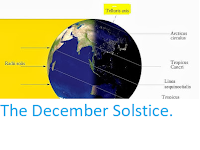A partial Solar Eclipse will occur on Thursday 15 February 2018, visible
from much of Antarctica, as well as Chile, Argentina, Paraguay, Uruguay and southern Brazil. The eclipse will occur between 9.55 pm and 10.47 pm GMT.
The
area over which the 15 February 2018 partial Solar Eclipse will be
visible. Areas in darker grey will be able to observe the entire
eclipse, in the lighter grey areas the eclipse will either begin before
sunrise or end after sunset, so only part of the event will be visible. HMNautical Almanac Office.
Eclipses
are a product of the way the Earth, Moon and Sun move about
one-another. The Moon orbits the Earth every 28 days, while the Earth
orbits the Sun every 365 days, and because the two Sun and Moon appear
roughly the same size when seen from Earth, it is quite possible for the
Moon to block out the light of the Sun. At first sight this would seem
likely to happen every month at the New Moon, when the Moon is on the
same side of the Earth as the Sun, and therefore invisible (the Moon
produced no light of its own, when we see the Moon we are seeing
reflected sunlight, but this can only happen when we can see parts of
the Moon illuminated by the Sun).
The relative positions of the Sun, Moon and Earth during a Solar eclipse. Starry Night.
However
the Moon does not orbit in quite the same plane as the Earth orbits the
Sun, so the Eclipses only occur when the two orbital planes cross
one-another; this typically happens two or three times a year, and
always at the New Moon. During Total Eclipses the Moon entirely blocks
the light of the Sun, however most Eclipses are Partial, the Moon only
partially blocks the light of the Sun.
How the differing inclinations of the Earth and Moon's orbits prevent us having an eclipse every 28 days. Starry Skies.
Although the light of the Sun is reduced during an Eclipse, it is still extremely dangerous to look directly at the Sun.
Animation showing the shadow of the Moon at five minute intervals on Thursday 15 February 2018. Andrew Sinclair/HM Nautical Almanac.
See also...
Follow Sciency Thoughts on Facebook.










